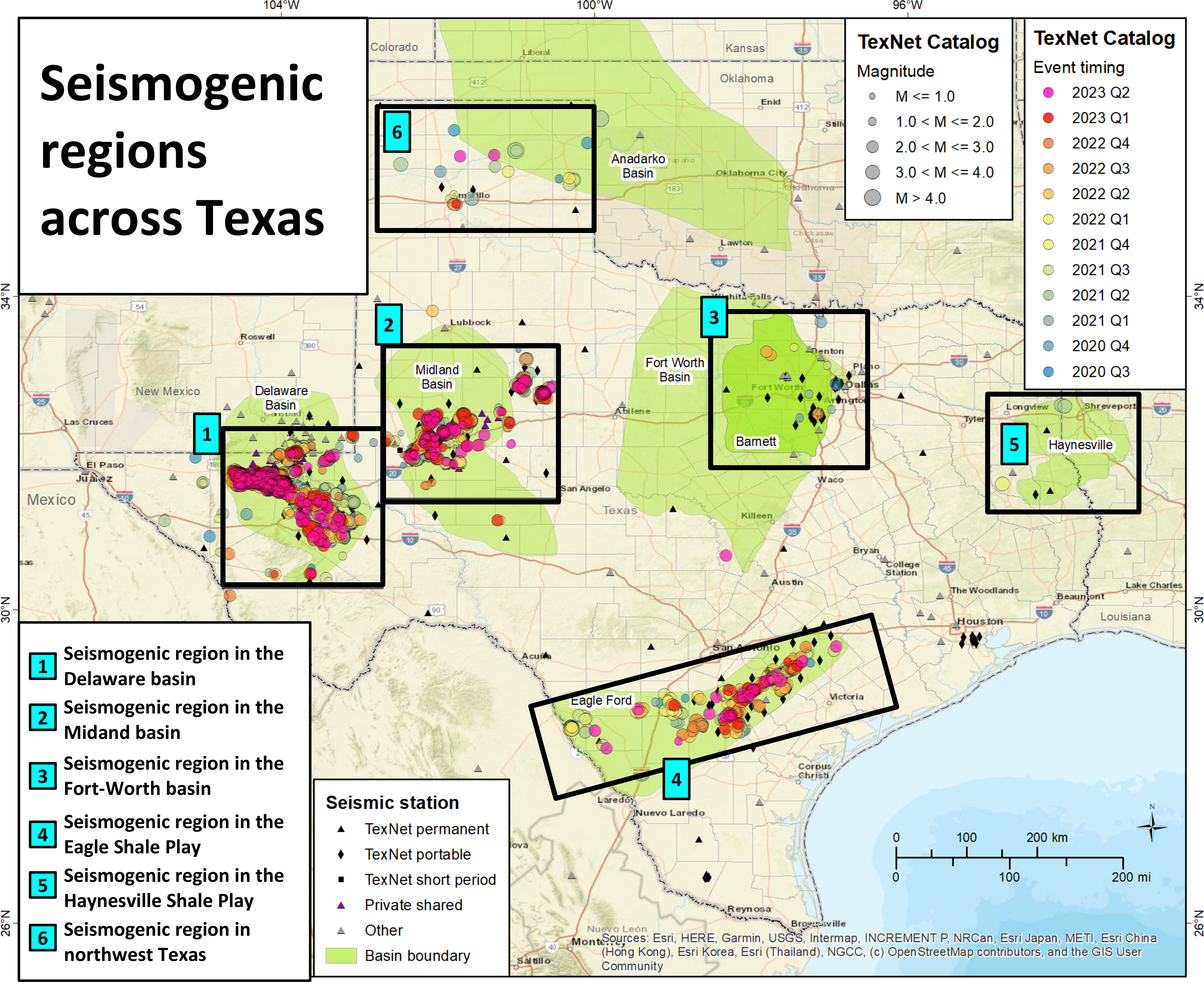Seismotectonics
Since 2009, induced seismicity in Texas has significantly increased. The Texas Seismological Network (TexNet) has recorded an enormous number of earthquakes across the state, which has enabled seismologists at TexNet to study seismotectonics and to characterize seismogenic structures across the state.
TexNet used seismic data to invert earthquake source mechanisms to represent the fault type and rupture patterns. High precision earthquake locations help seismologists to identify the fault zones and their geometry. In Texas, these seismogenic structures are commonly sitting in the top portion of the Precambrian crystalline basement. Fluid injection from the oil and gas activities has disturbed the regional stress field, and further triggered the fault reactivation.
Based on the seismogenic characteristics, TexNet identified four major and two minor seismogenic regions across the state, composed of fault architectures resulting from the latest extensional tectonic activities. These tectonic activities have created a series of basement-rooted, strike-slip, and normal faults.
Overall, they geographically spread out in west Texas, north Texas, northwest Texas, southeast Texas, as well as east Texas; where the oil & gas activities have been very active. In particular, these seismogenic regions contain the following major tectonic units: (1) the Delaware Basin, (2) the Midland Basin, (3) the Fort-Worth Basin, and (4) the Eagle Ford Shale play. Generally speaking, earthquakes in these seismogenic regions are hosted by either normal faults or strike-slip faults. However, the orientation of these faults varies across the regions.
Seismotectonic features in the four major tectonic units are:
(1) In the Delaware Basin:
- The source mechanisms present in this region are predominantly normal faults, with various dipping angles. Most notably, there is an observable change in the seismicity trend and fault geometry on either side of the basin-bisecting Grisham fault zone. Spatial variations of source mechanism patterns across the Delaware Basin are also observed.
(2) In the Midland Basin:
- The inverted focal mechanisms in this region are a mix of strike-slip and normal faults. A combination of all seismogenic features has demonstrated a presumed basement-rooted rift structure transecting the Midland Basin. On two sides of the interpreted rift structure, the crustal deformation is accommodated by a series of strike-slip faults.
(3) In the Fort-Worth Basin:
- A number of normal faults are distributed in this region. The fault geometry is commonly running NE-SW.
(4) In the Eagle Ford Shale play:
- Normal and strike-slip faults coexist in this region. These normal faults are collectively striking in a southwest–northeast direction, whereas the geometry of strike-slip faults is running roughly perpendicular to the normal faults, and distributed in between the parallel normal faults to accommodate the different extensional strain between the normal faults.



